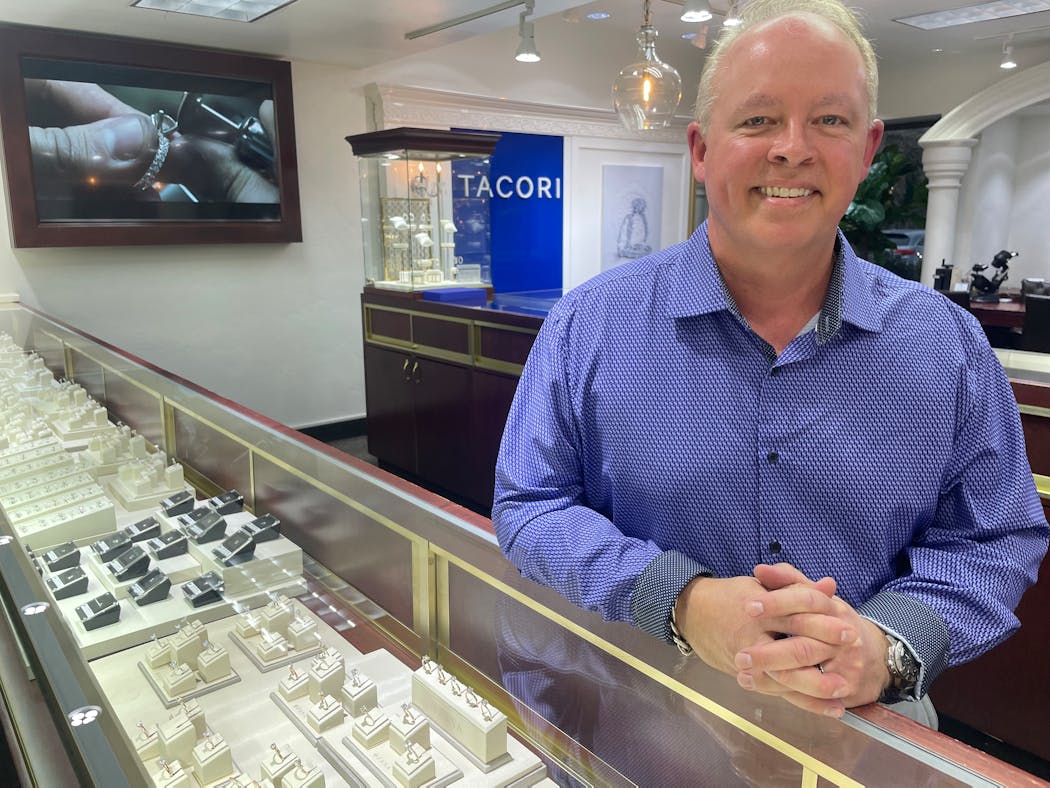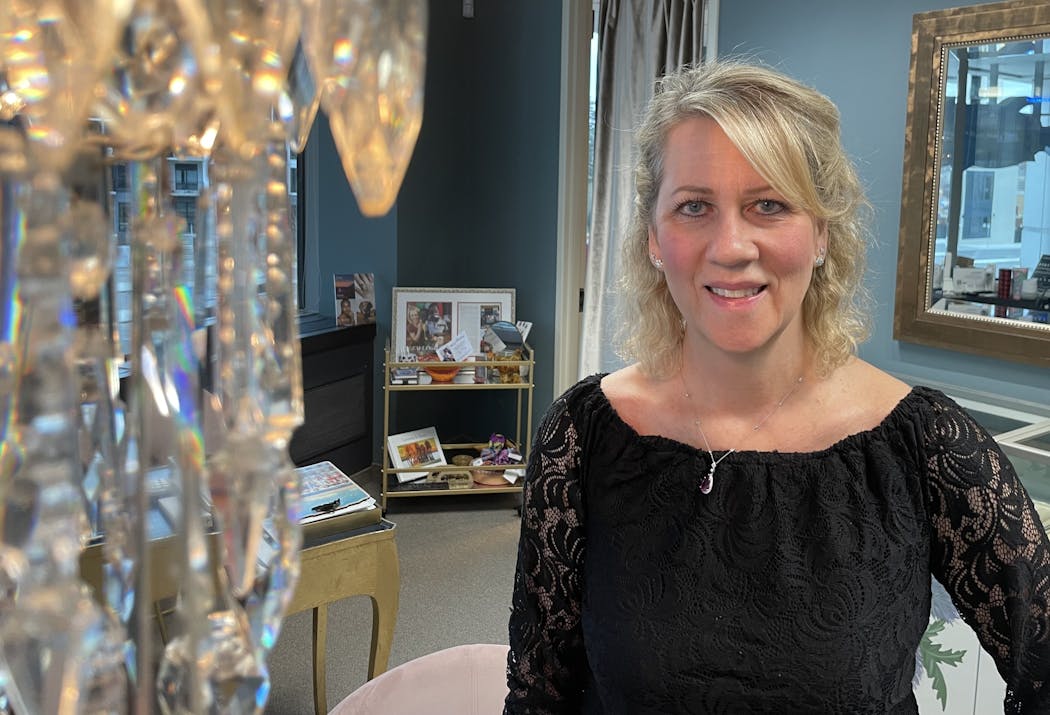Valentine's Day is a day of romance, and some couples in love today will decide to marry.
They're so lucky. There's never been a better time to buy a diamond ring, the symbol of engagement Americans have prized for about a century.
The jewelry business is being transformed by the rising production and variety of lab-grown diamonds. They've made it easier for people to buy bigger, higher-quality diamonds at lower prices. The aftertaste of a diamond purchase, that feeling of settling for one that's not quite as good because you couldn't afford to pay more, is becoming a thing of the past.
Tyler Nogoi, second-generation co-owner of Arthur's Jewelers in Roseville, notices that change with men the most. "Everyone likes to get a little bit more for their money," he said. "A guy feels pretty good if he can come home with a gift, for an anniversary if he's married or a birthday or a holiday, that's really impressive looking."
Making and selling jewelry is a fun business. The people in it work with beautiful things all the time, and there's always a bit of intrigue and drama to what they do. However, there has not been much change to the centuries-old formula of finding a precious gem or metal, forging it into something artful and selling it.
That is, until recently.
Laurie Kottke's eponymous boutique is next to Bde Maka Ska in Minneapolis. Both she and Nogoi have been in the business for around 40 years; their shops are literally dazzling and their love for jewelry is deep. The arrival of lab-grown diamonds about a decade ago, and their popularization over the last five years, is the biggest change they've seen.
"You can get a two-carat, really high color, really high cut-grade, lab-grown diamond for the price of a one-carat earth-mined," or natural diamond, Nogoi said. "And that's why we're seeing the average diamond size sold in our store go to two, two-and-a-half carats." It was about one carat a decade ago.
Shortly after I called to schedule my visit with Kottke, a longtime customer rang her to ask for a showing of lab-grown diamond earrings.
"I love the mystique of natural stones and I love that no two are alike," Kottke said. "But if I have a client who for whatever reason wants to buy lab-created, I'll get it for them."
People are buying diamonds more often because of the lab-grown phenomenon. Paul Zimnisky, a diamond industry analyst in New York, says that a decade ago each purchase of a lab-grown diamond displaced the purchase of a mined one. Prices of lab-grown diamonds have plunged, however, as output grew. Today, 40% of purchases of lab-grown diamonds are incremental, meaning they add to the size of the overall industry, he wrote in a report published last month.
"I think we're on the back end of the novelty phase. This product has been available on a mainstream level for five or six years," Zimnisky said. He added, "I look at this so closely I sometimes lose perspective. Just to go out and talk to people on the streets, some people don't even know it exists. They don't know what it is."
If you are one of those people, lab-grown diamonds are optically and physically the same as ones dug up from the ground. However, the heat and pressure forming the diamonds comes from a man-made process rather than a natural one.
Even under loupes and microscopes, people can't distinguish lab-grown and mined diamonds. Gemologists test for nitrogen, which is absent in lab-grown diamonds. Both are measured on the same 4C scales — carat, clarity, color and cut.
Some people shun natural diamonds because of the industry's record of labor abuses, or because restrictions on distribution create artificial scarcity and drive up prices. Lab-grown diamonds also have tradeoffs, though. They require immense amounts of energy to produce. And so far, they tend to lose value faster than natural diamonds.
Some wholesalers and dealers of natural diamonds look down on lab-grown ones because of their lower financial value. Those purveyors are giving up opportunity, Nogoi said. He's seen customers who initially bought lower-priced lab-grown diamonds return to buy natural ones when they could afford to spend more. He's also seen long-time customers who own natural diamonds come in to buy lab-grown ones because they saw what their children or grandchildren were getting.
"Parents see that and they want to upgrade their diamond size because their daughter is getting this big diamond," he said.
With greater choice of product and price, people can also express themselves with jewelry in new ways. They are stacking rings, wearing multiple studs or layering necklaces. At the Grammys earlier this month, Taylor Swift wore a vintage watch as a choker, with two other chokers and three more necklaces.
"People want to be express themselves as an individual, that 'This is my style. This is what I like to do,' and it doesn't matter if it's a trend or a fad," Kottke said. "But then the other thing is star power. Always movie stars and athletes. I'll tell you what's going to be huge: wearing a watch as a necklace."

Ramstad: Biden, Trump show how hard it is to let go of power, identity
Ramstad: In a chaotic moment, Americans still have power over what's next
Ramstad: In a big change to nation's corn, you might soon see shorter stalks

Ramstad: Human progress is not the enemy of the planet






